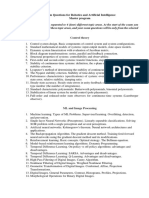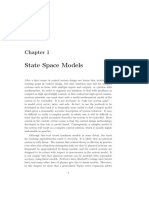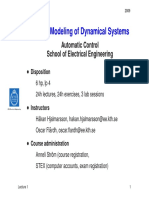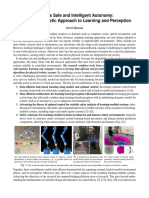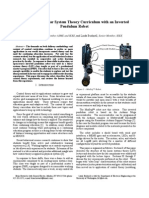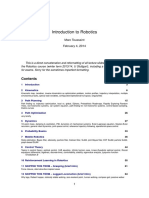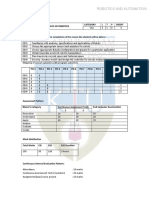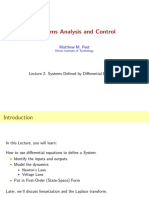0% found this document useful (0 votes)
10 views30 pagesControl 02 - Linearization
The lecture covers linearization and stability in control engineering, focusing on linear time-invariant (LTI) systems. It discusses the process of deriving local linear models from nonlinear systems and the importance of stability analysis using eigenvalues. Examples, such as a car model and inverted pendulum, are presented to illustrate these concepts.
Uploaded by
Muhammad Nafees MumtazCopyright
© © All Rights Reserved
We take content rights seriously. If you suspect this is your content, claim it here.
Available Formats
Download as PPTX, PDF, TXT or read online on Scribd
0% found this document useful (0 votes)
10 views30 pagesControl 02 - Linearization
The lecture covers linearization and stability in control engineering, focusing on linear time-invariant (LTI) systems. It discusses the process of deriving local linear models from nonlinear systems and the importance of stability analysis using eigenvalues. Examples, such as a car model and inverted pendulum, are presented to illustrate these concepts.
Uploaded by
Muhammad Nafees MumtazCopyright
© © All Rights Reserved
We take content rights seriously. If you suspect this is your content, claim it here.
Available Formats
Download as PPTX, PDF, TXT or read online on Scribd
/ 30





